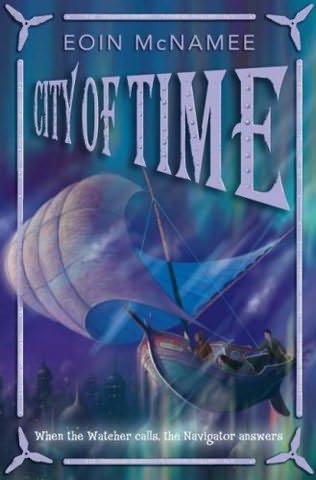 Author: Garry Kilworth
Author: Garry Kilworth Genre: Science Fiction, Adventure
Age Range: 10+
Theme/Subject: alchemy, time-travel, folklore, Prague, history
Publisher: Atom
ISBN: 9781905654031
Summary:
Magic….Mystery….Monsters…That’s what awaits Jack, Annie and Davey when they are transported back in time to the gothic city of Prague, to search for their missing parents. Trying to avoid capture by the secret police, they find themselves running through dark and dangerous cobbled streets and meeting some very shady characters.
Review:
Within twenty pages Garry Kilworth has already whizzed us back in time to the tenebrific and narrow streets of Prague, 1903. The Kettle family’s father is an eccentric inventor whose latest Verne-esque masterpiece is a part motorbike – part wrist-watch time-travelling machine. Kate Kettle, the mother of the family, wishes to trace her roots back to early 1900s Prague, where she hopes to meet her ancestors. Unfortunately, the Golden City was very different a century ago – it is a place crammed with alchemists, secret police and a host of folkloric beasts, among which are water-ghouls, fire sprites and the unstoppable Golem. It falls upon the Kettle children to follow their parents back in time and break them free from Castle Karlstein and the clutches of the evil Weasel.
When it comes to exploring this story, I find high-adventure to be an understatement. Within the 300 odd pages, Kilworth crams in a healthy dollop of thrill-power, surprise, suspense and trickery. And yet the author doesn’t just want to share an exciting story with you, he also wants you to absorb the folklore and history of this Golden City. With an incisive eye, Kilworth immerses you in Prague’s past at a time when modernisation and economics are beginning to suffocate the world of magic and folklore. The Prague that Kilworth shares with us is one where at the turn of a corner, you are greeted by the secret police and the military and yet at the following corner you’re greeted with ravenous water-ghouls, waiting to feast upon your soul.
When the children arrive in Prague they are soon separated and undergo different challenges where they must prove themselves worthy, to the author and reader, of achieving their final goal. Although I enjoyed the banter between the siblings when they were together, I preferred their own quests as it allowed Kilworth to show us far more of early 20th century Prague, which he is clearly very eager to do.
Make no mistake though, this story is no history lesson. It is the exciting pace and story that drives you to turn the pages. It is rare to read a book where you learn something about a place and yet reach the final pages feeling as if you’ve been on an exhilarating exploration through a world seeped in the fantastical. It is the shady characters and fantastical creatures that make their mark on your imagination.
‘The Hundred-Towered City’ is a novel of many possibilities. It offers itself, not only as an exciting read in the classroom or at home, but it genuinely also as a study of a society’s beliefs and constitution at the turn of the twentieth century. Readers witness a Prague that is going through great (and rather haunting) change; where folklore and fact are at a crucial turning point. It falls upon the Kettle family and the reader to make sure that this wonderful city, its history, folklore and people are never forgotten.
















